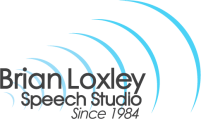IPA Symbols
(International Phonetic Alphabet)
VOWELS
FRONT
CENTRAL
BACK
DIPHTHONGS
R-VOWEL DIHPTHONGS
CONSONANTS
UNVOICED
VOICED
STOP-PLOSIVES
VOICED
NASALS
VOICED
SYLLABIC
ain
FRICATIVES
SEMI-VOWEL
![]() / able
/ able
SIBILANTS
GLIDES
UNVOICED/VOICED
A single speech sound — either a vowel or a consonant — is indicated by an IPA symbol between two slashes — / p /. A word is shown phonetically in brackets — [pɛn].
A primary stress is indicated by an accent mark occurring slightly above and before the syllable that is to be stressed:
A stop-plosive consonant that is stopped-but-not-exploded is indicated by the symbol / ̚ / just above and to the right of the IPA symbol / t̚ /:
